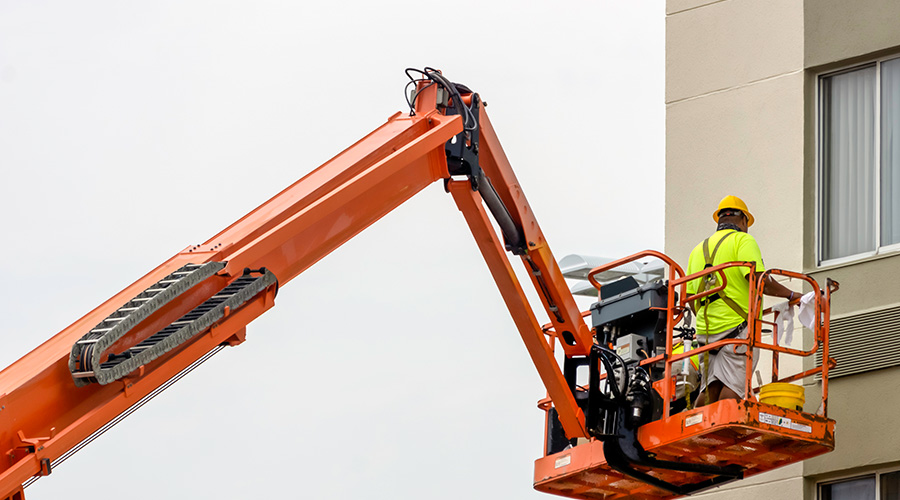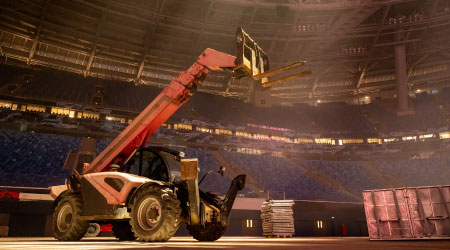Managers Discuss Inventory Management Strategies
By Dan Hounsell, Editor-in-Chief
OTHER PARTS OF THIS ARTICLEPt. 1: This Page
Front-line technicians in maintenance and engineering departments rely on an array of spare parts, materials and tools to effectively perform their daily tasks. For managers, the challenge is specifying these materials and ensuring they are stocked and tracked efficiently. Managers who handle these duties effectively can take an important step in ensuring their departments carry out their core mission.
What is your role in purchasing products and managing inventory for your department?
Sean Arnold, Executive Director of Support Operations, Hernando County School District, Brooksville, Fla.: I get involved with a lot of the discussions about the types of equipment to purchase and the primary goals we’re trying to achieve with the purchase of new equipment and the replacement of old equipment. I bring a little bit of history, I guess, in the sense that we had done this 10 years ago. So what should we do this time around? Managers do most of the day-to-day work as far as what types of equipment and who they’re going to be assigned to.
Craig Borkman, Project Manager, School Plant, Virginia Beach (Va.) City Public Schools: My involvement is indirect in that our coordinators and supervisors are the primary point personnel for approving requests as made by our frontline craftsmen. A bulk of our repairs are quick in nature, so we utilize an in-house parts department for most commonly needed items. Three employees work in our parts department and ensure we have adequate parts available. They also reorder parts and work to ensure efficient delivery.
Where is inventory management on your priority list?
Borkman: It’s right up there with day-day-operations. With the number of facilities that we have, things are constantly failing or are in need of replacement. Without the right parts and pieces, you can’t do your job.
Arnold: It’s a high priority. In order to have a successful system, you really need to make sure that this function operates smoothly. It’s an area that could and does get audited quite often, either through internal audits or state audits. So your numbers and your system have to be accurate. You can get audited based on the operation of how you’re dealing with things and the counts of what’s in the system. It’s something we take very seriously.
Describe the system you use to manage inventory.
Arnold: We were on the paper-and-pencil system before, and it left a lot of gaps and openings. It wasn’t as accurate compared to what we do now. We’ve moved into using an inventory module in our CMMS. It’s incorporated into the day-to-day operation of everything we do. What’s nice about it is that it’s accurate. It’s taking all of the information we put into the system and storing all of that data in an organized way. So if we need to pull a report, we can pull reports on specific pieces of equipment or locations of equipment. It takes in all of the names of manufacturers and dates of installation. We can get a lot of information out of the system, and it enables us to report. So when we are dealing with the budgetary items, we need this amount of money, and this is the data that supports what we need.
Borkman: (A CMMS inventory module) allows our personnel to set reorder parameters so as not to get to the point whereby we are empty. We have updated software that allows us to scan the parts and attach materials to the work order. This allows us to run year-end reports that can indicate where we are spending our time and money on older equipment.
The department transitioned from (one CMMS to another) about 12 years ago. I was not part of the team at the time. I came on a year after the fact. (The previous CMMS) was no longer being supported. I was with the district when we changed buildings, and our old parts department was utter chaos. That was just a byproduct of the way things had always been done for the past 30 years — with pen and paper. It was the mindset that we are resistant to change. When we had the opportunity to jump on board with (the current CMMS), it brought us into the 21st Century.
What are your primary challenges in specifying products and inventory management?
Arnold: It’s a task to get equipment. You have to make sure that almost a year in advance of your funding for your proposed purchases. You almost have to have that crystal ball to look forward to see what you’re going to need. All of the inventory we do have is prioritized with a life cycle of which piece of equipment needs to be replaced first. Then we have a cost associated with that, and that’s what we try to budget for.
Funding is always a challenge with any type of purchasing or specification. It might be that you need a certain piece of equipment and you feel that the piece of equipment is going to be the exact need and the exact fit for the application. But maybe the budget doesn’t equal the amount of that piece of equipment. So you have to hunt around for alternatives, and sometimes you have to settle on a piece of equipment that does everything you need it to and will fit the application but at a lesser amount. It keeps us on our toes to make sure we are really championing the cause of getting the most product out of the money.
Being a public K-12 system, we sometimes have problems with the process of procuring these pieces of equipment — the length of time it can take if bids or board approvals are required, depending on the cost of the equipment. We have to be sure we’re addressing all of the issues up front and taking the time to prepare for any issues or roadblocks that we might have to address to get what we need for the schools.
One of the (inventory) challenges we have is making sure everything that we order is needed. Sometimes a technician will need one part but order three parts because they think something is going to fail and they might need that part further down the road. That’s difficult to predict. We try to get technicians to order the part that’s needed at the time and use that just-in-time strategy.
Borkman: The biggest challenge is keeping the parts in stock with the numerous requests being made. We handle in excess of 50,000 work orders per year. Thus, it is a constant revolving door in supplying, stocking and distribution. Automatic reordering has proven to be a major time saver, and the scanners eliminate a lot of extra typing.
Also, our parts department has to abide by the Virginia state procurement act, which requires us to be cognizant of a $30,000 threshold, meaning if we exceed this amount for a purchase, we must obtain three bids and award a contract. This can lead to delays in the event there is an emergency repair. We work with our purchasing department to ensure we have ample contracts to avoid these delays.
What’s next in streamlining purchasing and inventory management?
Borkman: It would be advantageous for us to have a parts runner in lieu of potentially having two personnel coming back to the shop to obtain parts.
Right now, personnel try to knock out all assigned work orders, but they might not be able to fix the faucet that’s dripping today because they don’t have the O-ring to fix the drip. So that becomes the first stop tomorrow after they can return to the shop and obtain the part for the work order that was left open because they didn’t have those parts with them in their vehicle.
We also have talked about the ability to e-mail into the parts department and request the necessary parts for the following day to be ready for pickup. We’re always trying things to become more efficient.
Arnold: We’ve already done a lot of things to streamline the process. We went to a barcoding system. A technician can take a work order that comes in with a barcode and get their parts to do the job. All of the parts have barcodes that are scanned and automatically attached right to the work order.
The cost of the part is calculated into the work order. Technicians also have barcodes on their IDs that automatically is attached to the work order. This way, we’re keeping track of all of our costs for parts and labor related to that job. We know what each of our work orders costs us, and we can run reports to find out just how much we’re spending on a certain type of task to see if that cost is consistent and look into whether we’ve performed the process properly.
The next step in the process is to generate a list of items within our inventory that would tell the warehouse staff about items that are getting low in inventory and when they should be reordered at what amount and how many to order. It also would let them know where they can purchase that item. It cuts down on the time the warehouse manager needs to spend searching for needed parts and how many parts they really need. That’s something we’re working on.
Our scanners can be a little temperamental as a byproduct of our interface with technology, firewalls, and signal strength. There also might be a glitch in the software that has to be reset. I have the impression that sometimes they work and sometimes they don’t and if they don’t, you just go to your backup and hand-type the information into the computer. But when they work, they’re great for inventory.
We are also moving to a better tracking system with more details on each of the items so that we can generate a catalog of items that are readily available to technicians out in the field and that they can access using a smart device and attach the items they need to the work order. The warehouse staff then would pull the items and bundle them for pickup, or a runner could actually take that bundle out to the job site. That would save us a lot of time and money.
Related Topics:












